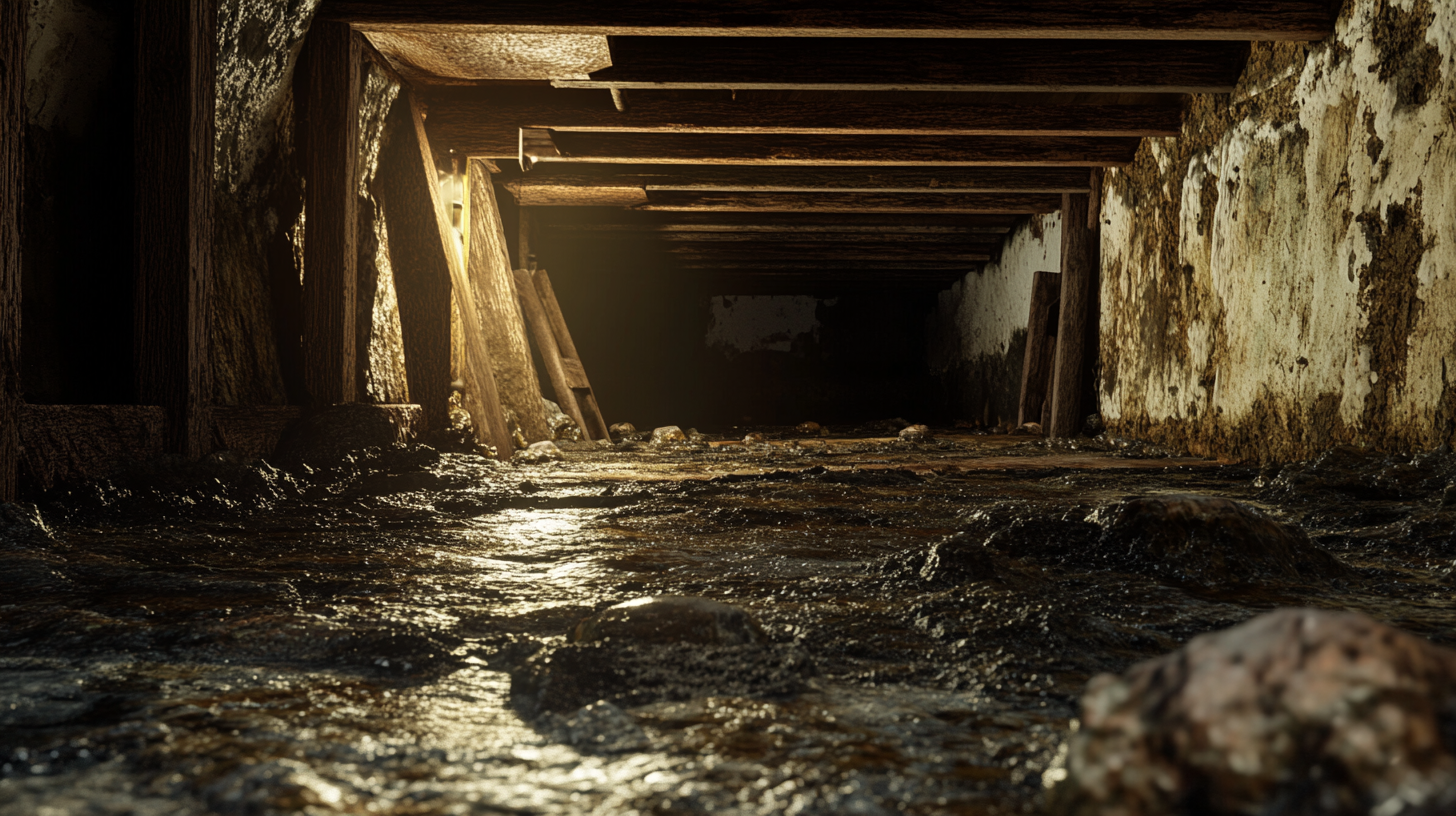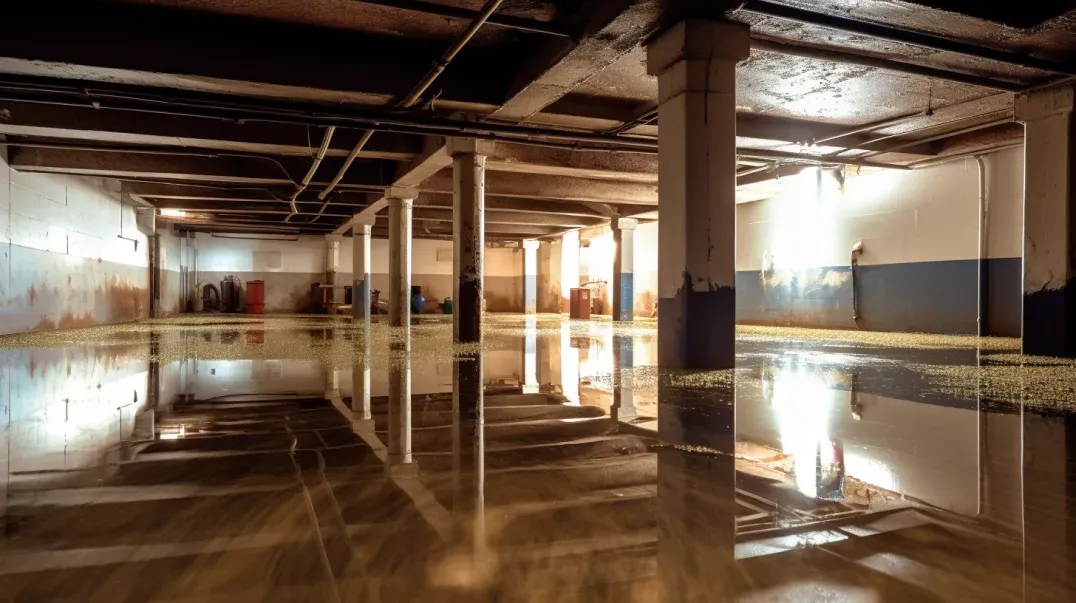Now IS THe Time To...

Crawl Space Services In Knoxville, TN
Stetson Howard: 865-432-6743
CRAWL SPACE ENCAPSULATION, REPAIR, WATERPROOFING & MOLD REMOVAL
No-Obligation, Free Inspections
No-Obligation Free Estimates
We Warranty All of Our Work
100% Satisfaction Guaranteed
In the realm of home maintenance, the installation of a sump pump stands out as a vital measure to protect properties from the perils of water damage. However, the process of installing a sump pump, while seemingly straightforward, carries with it significant safety considerations that cannot be overlooked. This blog delves into the critical importance of adhering to safety protocols during the sump pump installation process, highlighting the dual objective of safeguarding your home from water intrusion and ensuring the well-being of those involved in the installation.
The installation of a sump pump involves more than just technical know-how; it demands a comprehensive approach to safety that encompasses electrical safety, water handling, and the use of power tools. Each step, from the initial assessment of the installation site to the final testing of the pump, presents unique safety challenges that require careful attention and preparation. Whether you're a seasoned DIY enthusiast or considering professional installation, understanding these safety aspects is paramount.
Electrical hazards, the risk of water-related accidents, and the potential for injuries from tools and equipment underscore the need for a meticulous and informed approach to sump pump installation. This blog aims to equip homeowners with the knowledge and insights necessary to navigate these challenges, emphasizing best practices for a safe and successful installation. By prioritizing safety at every turn, homeowners can not only ensure the effective operation of their sump pump but also protect themselves and their families from the risks associated with improper installation.
As we explore the essential safety measures and precautions integral to the sump pump installation process, this guide reaffirms the principle that safety is not just a consideration but a cornerstone of responsible home maintenance. Join us as we underscore the critical need for safety, offering guidance to empower homeowners to undertake sump pump installation with confidence and caution.
Understanding the Risks of Sump Pump Installation
The decision to install a sump pump is often driven by the need to protect a property from the damaging effects of water intrusion. While the benefits of having a sump pump are clear, the installation process itself is not without its risks. From electrical hazards to the potential for water-related accidents and injuries from tools, understanding and preparing for these risks is crucial. This section provides an overview of the common hazards associated with sump pump installation and discusses the consequences of neglecting safety protocols, emphasizing the importance of a cautious and informed approach.
Common Hazards Associated with Installation
Overview of Potential Risks (Electrical, Water-Related, Tool-Related)
- Electrical Hazards: The installation of a sump pump often involves working with electrical wiring and components in close proximity to water, creating a risk of electric shock or electrocution. Ensuring that all electrical work complies with local codes and using GFCI (Ground Fault Circuit Interrupter) outlets can mitigate these risks.
- Water-Related Risks: The very nature of sump pump installation, often conducted in damp or wet conditions, increases the risk of slips, falls, and other water-related accidents. Keeping the work area as dry as possible and wearing non-slip footwear are essential safety measures.
- Tool-Related Injuries: The use of power tools, saws, and drills is common in sump pump installation, presenting risks of cuts, punctures, and other injuries. Proper handling, use of protective gear, and adherence to tool safety protocols are critical to prevent accidents.
The Consequences of Neglecting Safety
Discussion on the Potential Outcomes of Not Adhering to Safety Protocols
Neglecting safety protocols during sump pump installation can have serious consequences, not only jeopardizing the installer's well-being but also potentially compromising the effectiveness of the sump pump system. These consequences can include:
- Personal Injury: Failure to observe safety precautions can lead to severe injuries, some of which may have long-term implications for the individual's health and ability to work.
- Property Damage: Improper installation techniques or accidents can cause damage to the home's structure or electrical system, leading to costly repairs and undermining the very protection the sump pump is meant to provide.
- System Failure: Overlooking critical installation steps or safety checks can result in a sump pump system that fails when needed most, leaving the property vulnerable to flooding and water damage.
Preparing for Safe Installation
The foundation of a successful and safe sump pump installation lies in thorough preparation. This not only involves understanding the steps of installation but also ensuring you have the right tools and equipment for the job, as well as the necessary personal protective equipment (PPE) to safeguard against potential hazards. This section provides a comprehensive list of the tools and equipment needed for sump pump installation, emphasizing the importance of choosing safely designed and reliable items. Additionally, we offer a detailed guide on essential PPE and its proper use to protect installers throughout the process.
Gathering the Right Tools and Equipment
List of Necessary Tools and How to Choose Safely Designed and Reliable Equipment
A successful installation starts with the right set of tools. Here’s what you’ll need:
- Submersible or Pedestal Sump Pump: Choose a model that suits your water management needs and the size of your sump pit.
- Drill and Masonry Bits: For creating holes in the sump pit cover or the basement floor for piping.
- Saw: A hacksaw or PVC cutter for cutting pipes to the correct length.
- Screwdrivers and Wrenches: For assembling and securing the pump, piping, and check valve.
- Tape Measure and Level: To ensure accurate placement and leveling of the pump and discharge lines.
- PVC Piping and Fittings: Select durable materials designed for water discharge applications.
- Check Valve: Prevents backflow of water into the sump pit.
- GFCI Outlet: Ensures electrical safety, especially in damp environments.
When selecting tools and equipment, opt for those with safety features and certifications from reputable manufacturers. Reliable, well-designed tools not only last longer but also offer features that enhance safety during use.
Personal Protective Equipment (PPE)
Detailed Guide on Essential PPE (Gloves, Goggles, etc.) and Its Proper Use
Personal safety during installation cannot be overstated. Essential PPE includes:
- Gloves: Wear heavy-duty gloves to protect your hands from sharp edges and potential irritants.
- Goggles: Safety goggles are crucial to protect your eyes from flying debris, especially when drilling or cutting.
- Ear Protection: Use earplugs or earmuffs when operating loud power tools to prevent hearing damage.
- Non-Slip Footwear: Waterproof boots with non-slip soles can prevent falls in wet conditions.
- Dust Mask or Respirator: When working in dusty conditions or with potentially hazardous materials, a mask can protect you from inhaling irritants.
Proper use of PPE involves ensuring that all items fit correctly and are worn consistently throughout the installation process. Before starting, check each piece of PPE for damage or wear and replace any items that cannot provide adequate protection.
Electrical Safety Measures
The installation of a sump pump is a critical step in safeguarding your home from water damage, but it also involves navigating the complexities of electrical connections. Electrical safety is paramount, not only to ensure the proper functioning of the sump pump but also to protect those involved in the installation process from potential hazards. This section covers the basics of safe electrical practices and provides tips for preventing electrical risks, focusing on the use of GFCI outlets and proper wire handling.
Understanding Electrical Connections
Basics of Safe Electrical Practices for Sump Pump Installation
Electrical connections for sump pumps must be handled with care to prevent shock and ensure the system's reliability. Here are the foundational practices:
- Read the Manual: Always start by reading the manufacturer’s installation instructions, which include specific electrical requirements and safety precautions.
- Check the Power Source: Ensure that the sump pump is connected to a properly grounded outlet. Avoid using extension cords as permanent solutions, as they can be a fire hazard and may not provide adequate power.
- Circuit Breaker: Install the sump pump on a circuit protected by a circuit breaker to prevent electrical overload.
Understanding these basics is crucial for anyone involved in the installation process, whether you're a DIY enthusiast or a professional.
Preventing Electrical Hazards
Tips for Avoiding Electrical Risks, Including the Use of GFCI Outlets and Proper Wire Handling
Electrical safety during sump pump installation can be enhanced by adhering to the following practices:
- Use GFCI Outlets: Ground Fault Circuit Interrupter (GFCI) outlets are essential for any appliance located near water, including sump pumps. These outlets quickly shut off electricity if a ground fault is detected, significantly reducing the risk of electric shock.
- Proper Wire Handling: Handle wires with care to avoid cuts, nicks, or other damage that could expose the wire and create a shock hazard. Ensure that all connections are secure and covered.
- Waterproof Electrical Connections: Use waterproof covers for outdoor outlets and ensure that any indoor connections near the sump pit are protected from moisture.
- Professional Inspection: If you’re unsure about the electrical setup, consider having a professional electrician inspect the connections and setup to ensure everything is up to code and safe.
Water Safety Precautions
The installation of a sump pump inherently involves dealing with water, whether it's managing existing moisture issues or preventing future water damage. Working in wet conditions and safeguarding the home against water-related damage during installation are paramount concerns that require careful planning and precautionary measures. This section outlines essential guidelines for ensuring safety when working in potentially wet areas and provides strategies for protecting the work area and the home from water damage and flooding.
Working in Wet Conditions
Guidelines for Ensuring Safety When Working in Potentially Wet Areas
Working in wet conditions, especially in the confined spaces where sump pumps are typically installed, presents unique challenges and risks. To ensure safety:
- Wear Non-Slip Footwear: Water on smooth surfaces can create slip hazards. Wearing boots or shoes with non-slip soles can help prevent falls.
- Use Waterproof Gloves: Protect your hands and improve grip by wearing waterproof gloves, especially when handling electrical components.
- Ensure Adequate Lighting: Wet areas can be dim, especially in basements or crawl spaces. Use waterproof, portable lights to illuminate the work area clearly.
- Keep Electrical Tools and Cords Dry: Always keep electrical tools, cords, and connections away from water. Use cordless tools when possible to minimize risk.
Preventing Water Damage and Flooding
Measures to Protect the Work Area and the Rest of the Home from Water-Related Damage
The process of installing a sump pump can expose your home to risks of water damage if not managed properly. To protect your property:
- Prepare the Area: Before beginning the installation, ensure that any standing water is removed and the area is as dry as possible. Use pumps or wet vacuums to clear water from the sump pit and surrounding area.
- Protect Your Belongings: Move furniture, electronics, and other valuables away from the work area to prevent accidental water damage.
- Manage Water Flow: If you're replacing an existing sump pump, be prepared to manage the water that may enter the sump pit during the process. Have a temporary pumping solution ready to keep the area dry.
- Seal and Waterproof: After installation, check the area around the sump pit and the foundation for any leaks or cracks that could allow water to enter. Use sealants and waterproofing measures to address these vulnerabilities.
Safe Handling of Tools and Materials
The installation of a sump pump is a hands-on task that requires the use of various tools and materials. While these are essential to the installation process, they also pose potential risks if not handled correctly. Ensuring the safety of everyone involved in the installation process is paramount. This section provides best practices for the proper use of tools during the installation process and offers advice on safely handling materials, including the disposal of any waste or hazardous materials.
Proper Use of Tools
Best Practices for Safely Using Tools During the Installation Process
The right tools can make the sump pump installation process smoother and safer. Here are some best practices for tool use:
- Read the Manuals: Before using any tool, familiarize yourself with its operation by reading the manufacturer's manual. Understanding the tool's features and safety precautions can prevent accidents.
- Wear Protective Gear: Always wear appropriate personal protective equipment (PPE), such as safety goggles and gloves, when using tools to protect against flying debris and injuries.
- Maintain Tools: Regularly inspect your tools for signs of wear or damage. Dull blades, frayed cords, and malfunctioning safety features can pose significant risks.
- Use Tools as Intended: Avoid using tools for purposes other than those for which they were designed. Misuse can lead to tool damage and personal injury.
- Keep Work Area Organized: A cluttered work area can lead to accidents. Keep tools organized and out of the way when not in use to prevent tripping or accidental activation.
Handling and Disposal of Materials
Advice on Safely Handling Materials and Disposing of Any Waste or Hazardous Materials
The materials used in sump pump installation, from PVC piping to electrical components, require careful handling:
- Follow Handling Instructions: Materials like PVC pipe and concrete can have sharp edges or create dust that is harmful if inhaled. Wear gloves and masks as needed when cutting or handling these materials.
- Dispose of Waste Properly: Collect and dispose of any waste materials according to local regulations. This includes packaging, old parts, and any hazardous materials that may have been removed during the installation process.
- Recycle When Possible: Many materials, such as metal or plastic components, can be recycled. Check with your local recycling center for guidelines on recycling old sump pump parts and related materials.
- Handle Chemicals with Care: If your installation process involves the use of sealants or other chemicals, ensure proper ventilation, wear protective gear, and follow the manufacturer's safety instructions to prevent exposure to harmful fumes.
FAQs
-
What PPE is needed for installation?
For sump pump installation, essential Personal Protective Equipment (PPE) includes safety goggles to protect your eyes from debris, durable gloves to safeguard your hands from sharp objects and chemicals, and sturdy, non-slip footwear to prevent slips and falls in wet conditions. Ear protection is also recommended when using loud power tools.
-
How to avoid electrical hazards?
To avoid electrical hazards during sump pump installation, ensure all electrical work is compliant with local codes. Use a Ground Fault Circuit Interrupter (GFCI) outlet for the sump pump to prevent electric shock. Always turn off the power at the circuit breaker before working on any electrical components of the sump pump system.
-
Can I install a sump pump myself?
Yes, a competent DIYer can install a sump pump by following the manufacturer's instructions carefully and adhering to all safety guidelines. However, if you're not comfortable with electrical wiring or plumbing, or if local codes require professional installation, it's best to hire a qualified electrician or plumber.
-
What tools are necessary for installation?
Essential tools for sump pump installation include a drill with masonry bits for creating holes in concrete, a saw for cutting pipes, screwdrivers, and wrenches for assembling components, and a level to ensure the pump and discharge lines are properly aligned. Always choose tools that you're comfortable using and that are in good working condition.
-
How to safely test the sump pump?
To safely test the sump pump after installation, fill the sump pit with water until the float switch activates the pump. Ensure you're standing clear of any open electrical components and that the area around the sump pit is dry. Observe the pump's operation to confirm that it's effectively removing water through the discharge line.
Recent Blog Posts
Crawl Space News



Schedule Your FREE Crawl Space Evaluation!
Did you know YOU DON'T HAVE TO BE HOME for us to provide you with your 100% FREE crawl space inspection and report?
Call Us Today at: 865-432-6743
Forever Guard Crawl Space Encapsulation and Repair of Knoxville is a specialty crawl space waterproofing company that services the greater Knoxville, TN and surrounding areas.
Business Hours
Sunday: 7:00 AM - 7:00 PM
Monday: 7:00 AM - 7:00 PM
Tuesday: 7:00 AM - 7:00 PM
Wednesday: 7:00 AM - 7:00 PM
Thursday: 7:00 AM - 7:00 PM
Friday: 7:00 AM - 7:00 PM
Saturday: 7:00 AM - 7:00 PM
legal info
All Rights Reserved | Forever Guard Crawl Space Encapsulation and Repair of Knoxville




